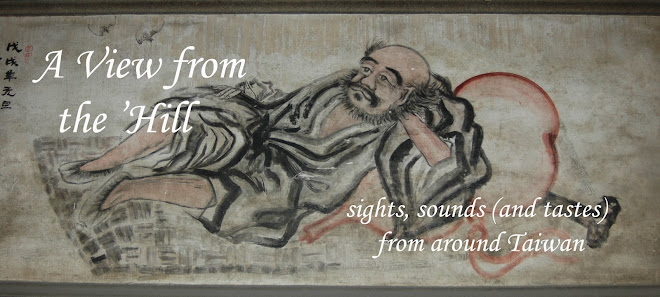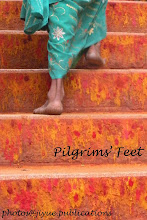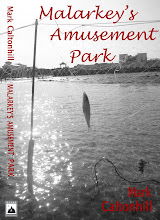
GT (http://www.globaltimes.cn/www/english/travel/themed-tours/2011-01/618482.html):
"In operation for 26 years," one sign reads; "Family-run for 35 years," another states, while yet another proclaims they've been "Selling the best foodstuffs for more than half-a-century." In Taipei's Dihua Street, tradition is everything, and this is never truer than during the annual "Southern and Northern Product Fair" that runs for two weeks leading up to the Lunar Calendar New Year's Eve (falling on February 2 this year).
Families get together, neighbors and friends visit, and since Taiwanese are nothing if not hospitable, a good supply of food is essential for the holiday.
Street Life
Supermarkets and department stores do a roaring trade in specially packaged lihe (gift boxes), and bottles of wine or whisky with free customized glasses. But most people, even if they normally buy their groceries at supermarkets, like to go to a street market to get in some traditional xiaochi (snacks) in the days or weeks before New Year. In Taipei, this means a trip to Dihua Street, in the Dadaocheng district to the north of the city center.
New Year's Eve kicks off with the traditional family weilu ("get-together around the stove"), for which hot pot is a popular dish. To perk up the usual meat and vegetables, this will contain a variety of dumplings, mushrooms, tofu and seafood, all of which are on sale.

On New Year's Day itself, cooking is taboo, so pre-cooked meat and preserved vegetables are in great abundance. Most traditional are the larou (cured pork) and lachang (sausages), since la means both "curing" and is also an alternative name for the last month of the lunar calendar. Also seen in giant heaps are beef, pork and cuttlefish jerky, rousong (shredded pork), smoked duck - a specialty of Taiwan's northeastern Yilan County - dried fish, shrimps, scallops, shark's fin and abalone.
Vendors compete vigorously: some wear costumes - either traditional Chinese apparel or eye-catching animal suits - many shout, and all offer free samples to tempt shoppers.
"Around three-quarters of a million people will visit the market between January 15 and February 1," Chen Shih-Che of Original Creativity, a privately run marketing company, told the Global Times. "This is significantly more than in previous years," he added.
Original Creativity helps Taipei City organize the annual event, including bringing contemporary pop, dance and even rap acts to a small stage in the middle of the market.
But this is really just a new face for a long-established tradition that existed for decades before the government got involved. Nanbei huo, that is, the best "produce from South to North [China]," has been sold in Dadaocheng to the north of Taipei Railway Station since before the Japanese colonial authorities instructed local shopkeepers to build porticoed brick buildings in the 1920s, and even before the railway was built in the late 19th century.
Temple Fair
One of the oldest areas of the city, it dates from the migration from the even-older district of Mangka (now Wanhua), slightly further south along the Danshui River. This influx of population was perhaps the result of fighting between rival Fujian immigrants or maybe due to silting up of the river, but whatever the reason, Dadaocheng's wharf became a key northern Taiwan center of import/export, and the local streets boasted many of the island's finest houses and company buildings.
Indeed, several of these still stand, as does the Xiahai Temple at 61 Dihua Street. Dedicated to the Lord of Walls and Moats - more commonly known as City God - and with half-a-dozen altars bearing statues of several dozen different Daoist and Buddhist deities, at other times of the year the temple organizes walking tours of the historic neighborhood.
During the two-week fair, however, it concentrates on offering free "blessed tea" to flagging shoppers, while conducting its usual business of marshalling the services of The Old Man Under the Moon - a Daoist deity - who is said to help find prospective mates for single worshipers.
Most shoppers bypass the temple, however, as there is still much shopping to be done. Having bought hot-pot ingredients and dried meat, they perhaps focus next on the fruit, nuts and candies that relatives and friends will pick at between meals over the coming days.
Once more seen in great piles, and as always available to taste, are quantities of peanuts, pistachio, almonds, variously flavored pumpkin seeds, dates, figs, sun-dried persimmons, chestnuts from Tianjin, and the Taiwanese people's beloved pineapple cakes. One stall even sells Chilean cherries, showing that "North-South produce" now applies to all over the world. Most traditional, and still most popular, are ju (small oranges), since their name sounding like zhu (to offer good wishes) in Mandarin and ji (auspicious) is prized in Minnan Taiwanese - and also they are tasty, nutritious and symbolic of good fortune over the year to come.

In a similar vein, Taiwanese like to give gifts of pineapples, since its Minnan name onglai is homonymous with "prosperity has come." At one meal during the New Year celebrations, a fish will be eaten, since niannian you yu (every year have a fish) means "every year have a surplus," another auspicious saying. Naturally, both are on sale in the Dihua Street market.
Everybody's talking
Minnan is the language of the street, though of course everyone speaks Mandarin, and, since the stalls are staffed with temporary student workers, they are happy to practice English on foreigners. "Try one, it's free," is the usual opening phrase.
Taipei Mayor Hau Lung-bin spent two hours at the market on January 21, not to shop but to enjoy the atmosphere. "It's great to see events like this revitalizing the oldest parts of our city," he told the crowd, before handing out thousands of spring couplets for people to hang at home.
For those not lucky enough to receive the mayor's gift, there are stalls selling couplets, lanterns, paper cuts and other traditional New Year ornaments, most of them red and many bearing rabbit images, in keeping with this year's Chinese horoscope animal.
Several parcel companies run stalls and promise to deliver fresh produce in temperature-controlled bags to relatives and friends anywhere on the island within 24 hours, as does the local branch of the post office. Even the police get in on the act, with the local precinct taking advantage of the large number of visitors to promote anti-corruption and other public-service campaigns.
Somewhat incongruously, there are one or two shops selling objects such as belts and needlework supplies, not because these have any connection with the upcoming festivities, but because their stores are here year round.
In fact, Dadaocheng is a fascinating area to visit any time of year, such as at City God's birthday in the fifth lunar month, or when the district's puppet museum and theater has a new exhibition or show. At all times, the stores will still be selling the "best from the South to the North," and visitors are guaranteed a taste of Taiwan from times gone by.




No comments:
Post a Comment